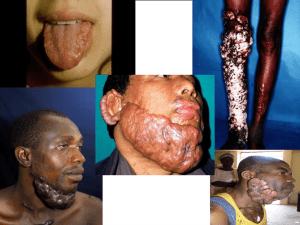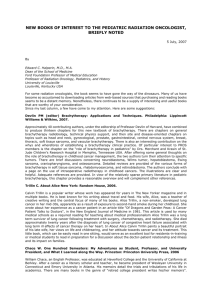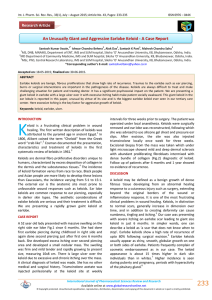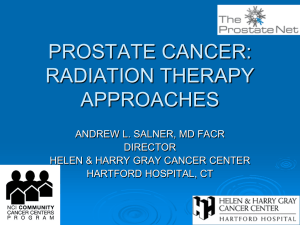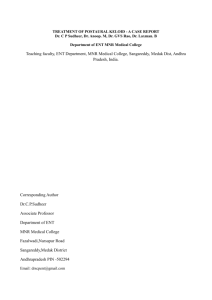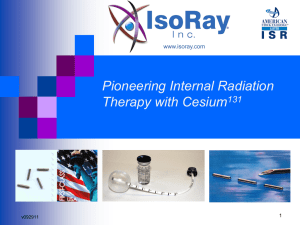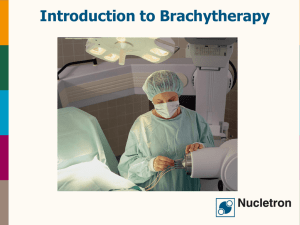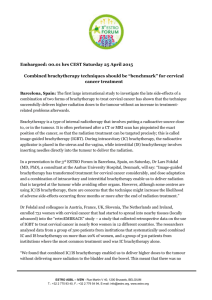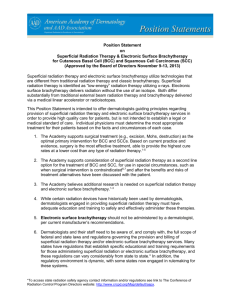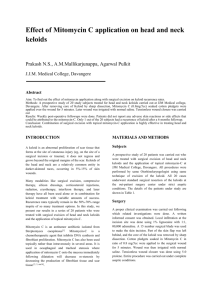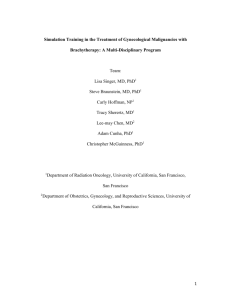Treatment of Recurrent Earlobe Keloids with Surgery and
advertisement
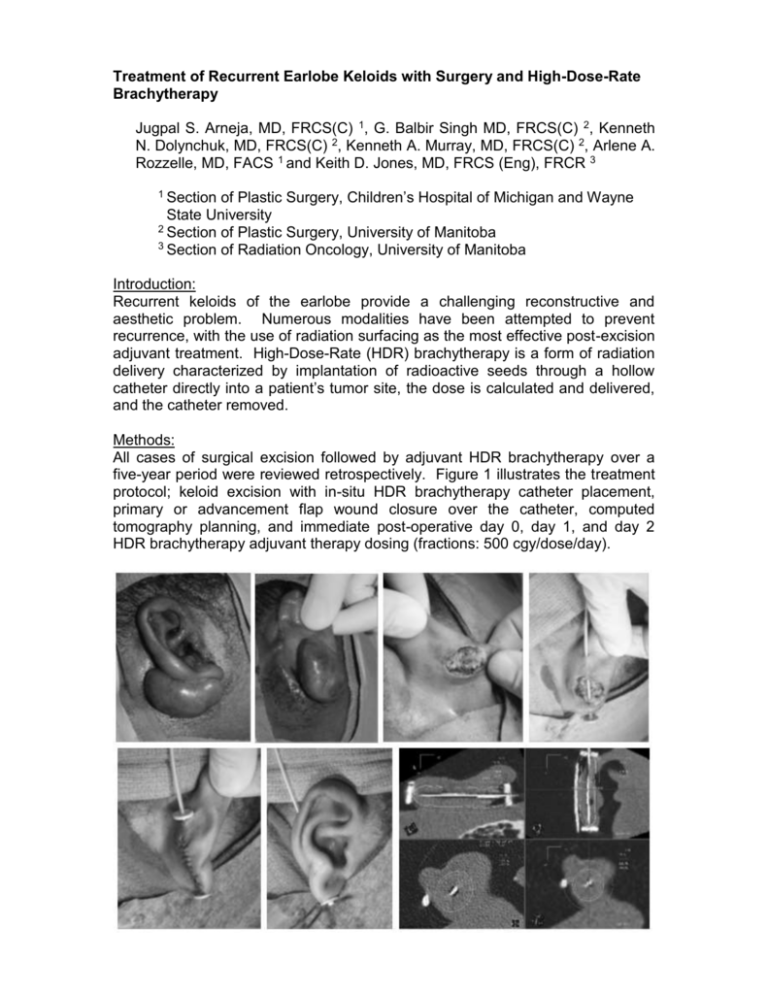
Treatment of Recurrent Earlobe Keloids with Surgery and High-Dose-Rate Brachytherapy Jugpal S. Arneja, MD, FRCS(C) 1, G. Balbir Singh MD, FRCS(C) 2, Kenneth N. Dolynchuk, MD, FRCS(C) 2, Kenneth A. Murray, MD, FRCS(C) 2, Arlene A. Rozzelle, MD, FACS 1 and Keith D. Jones, MD, FRCS (Eng), FRCR 3 1 Section of Plastic Surgery, Children’s Hospital of Michigan and Wayne State University 2 Section of Plastic Surgery, University of Manitoba 3 Section of Radiation Oncology, University of Manitoba Introduction: Recurrent keloids of the earlobe provide a challenging reconstructive and aesthetic problem. Numerous modalities have been attempted to prevent recurrence, with the use of radiation surfacing as the most effective post-excision adjuvant treatment. High-Dose-Rate (HDR) brachytherapy is a form of radiation delivery characterized by implantation of radioactive seeds through a hollow catheter directly into a patient’s tumor site, the dose is calculated and delivered, and the catheter removed. Methods: All cases of surgical excision followed by adjuvant HDR brachytherapy over a five-year period were reviewed retrospectively. Figure 1 illustrates the treatment protocol; keloid excision with in-situ HDR brachytherapy catheter placement, primary or advancement flap wound closure over the catheter, computed tomography planning, and immediate post-operative day 0, day 1, and day 2 HDR brachytherapy adjuvant therapy dosing (fractions: 500 cgy/dose/day). Figure 1: Intraoperative excision of large right lobule keloid with closure over brachytherapy catheter and CT scan treatment plan for three doses of postoperative HDR brachytherapy (500Cgy/dose/day). Results: The mean age of twenty-five patients meeting inclusion criteria was 27.8 years (range 15 to 59 years). There were 56% males and 44% females, primarily of Caucasian descent (72%). The mean duration of keloid presence prior to surgery was 26 months (range 14 to 55 months), while the mean keloid size was 4.7 cm2 (range 3.9 to 17.5 cm2). The mean follow-up interval was 35 months. There was a 92% treatment success rate with success defined as no recurrence of the keloid a minimum of two years post-operatively. Two patients had complications of post-operative infection and subsequent keloid recurrence. Conclusions: Our results suggest our technique is efficacious, safe, well tolerated, and successful at preventing recurrences with few complications at a mean 35-month follow-up. However, we recommend this technique only for recurrent earlobe keloids given the risk, albeit small, of radiation-induced malignancy. It is imperative to discuss this risk with each patient and their family prior to initiating therapy. HDR brachytherapy offers significant advantages over traditional external beam radiation and with wide accessibility to HDR brachytherapy across North America for the treatment of carcinomas and sarcomas, we feel that this technique can easily be extrapolated by plastic surgeons and radiation oncologists for the management of earlobe keloids. References: 1. Cosman, B., Wolff, M. Bilateral earlobe keloids. Plast Reconstr Surg. 53: 540, 1974. 2. Borok, T.L., Bray, M., Sinclair, I., et al. Role of ionizing radiation for 393 keloids. Int J Radiat Oncol Biol Phys. 15: 865, 1988. 3. Kovalik, J.J., Perez, C.A. Radiation therapy following keloidectomy: A 20 year experience. Int J Radiat Oncol Biol Phys. 17: 77, 1989. 4. Doornbos, J.F., Stoffel, T.J., Hass, A.C., et al. The role of kilovoltage irradiation in the treatment of keloids. Int J Radiat Oncol Biol Phys. 18: 833, 1990. 5. Sclafani, A.P., Gordon, L., Chadha, M., et al. Prevention of earlobe keloid recurrence with postoperative corticosteroid injections versus radiation therapy. Dermatol Surg. 22: 569, 1996. 6. Ragoowansi, R., Cornes, P.G.S., Moss, A.L., et al. Treatment of keloids by surgical excision and immediate postoperative single-fraction radiotherapy. Plast Reconstr Surg. 111: 1853, 2003.
